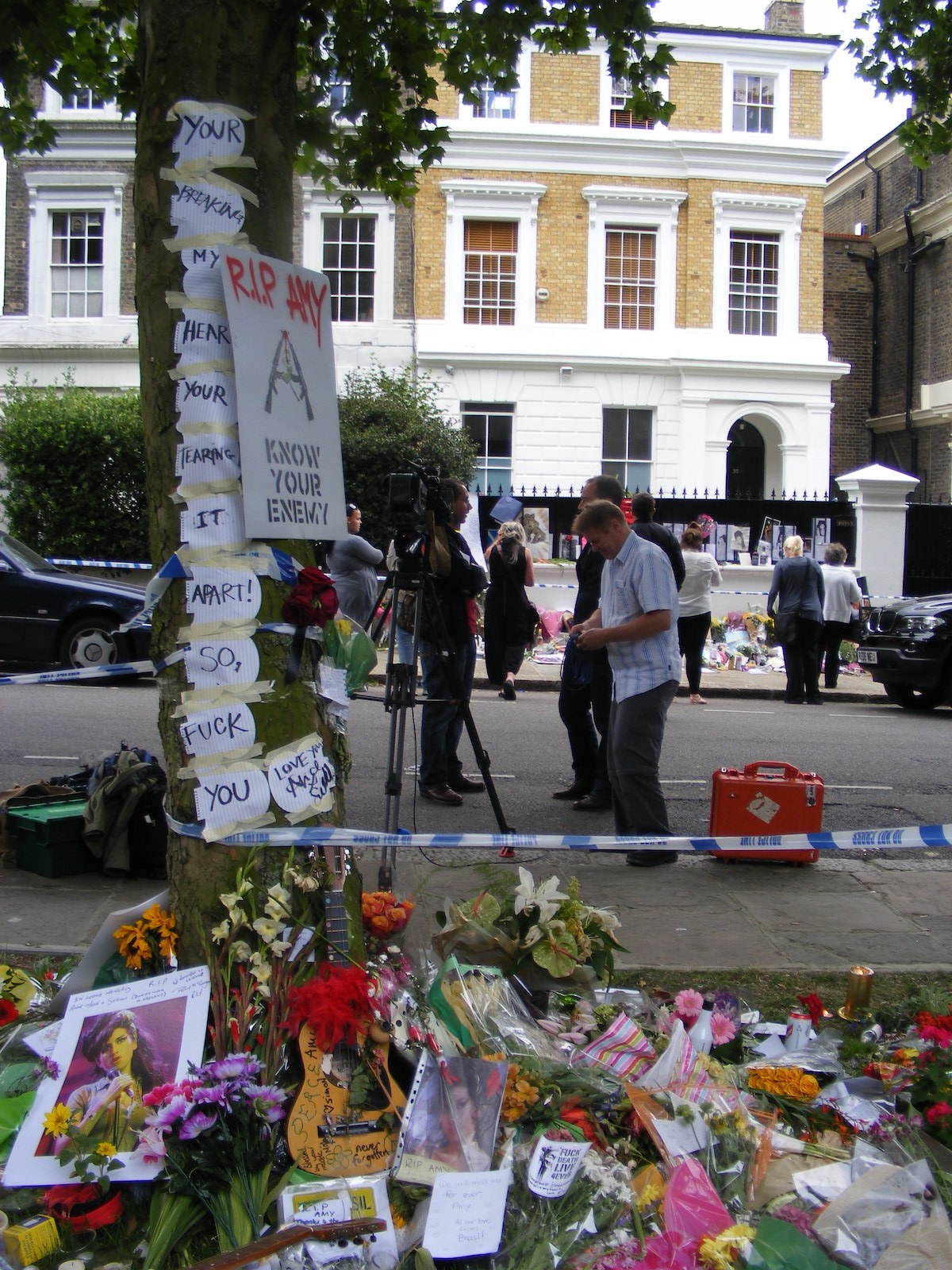This past weekend marked the 12th anniversary of Amy Winehouse’s death. To me, it doesn’t feel like that long ago. I’ll never forget the first time I heard an advance copy of Back To Black in 2006, before anyone in North America knew of her. Sitting on my couch, I listened to Rehab through my headphones. Then I played the song again. And again. Then I took off my headphones, turned to my wife who was watching TV and said, “You really need to hear this. It’s incredible.” A few months later, I was lucky enough to see her perform twice, and I still recall those joyful, amazing shows like they were yesterday. Of course, her life after that eventually became a lot less joyful. Anyway, here’s the short obituary I wrote in the hours after her passing back in 2011:
There may be only one thing sadder than the sudden, untimely death of Amy Winehouse — the fact that it shocked virtually no one.
Surprised, of course, is another story. Even the most cynical among us didn’t necessarily expect the beehived British soul diva to die at age 27 (following in the tragic footsteps of similarly troubled artists from Jim Morrison and Janis Joplin to Kurt Cobain). But let’s be honest: It seemed inevitable, only a matter of time. And with details still sketchy at this point — all that’s known is that Winehouse’s body was found in her London home — it’s easy to assume her years of self-destructive behaviour and substance abuse had finally taken their toll, one way or another.
Ironically, it was that very behaviour that helped make her a star. Winehouse shot to fame in early 2007, propelled by the black humour and frank honesty of her biggest hit Rehab and its unforgettable chorus: “They tried to make me go to rehab, I said no, no, no.” It catapulted her sophomore album Back To Black to the top of the charts around the world and earned her five Grammy awards, including trophies for Record and Song Of The Year, along with Best New Artist, Best Female Pop Vocal Performance and Best Pop Vocal Album.

It seemed like the start of a brilliant career. It turned out to be her peak. The resulting fame and fortune — coupled with her continuing addictions and bad behaviour — made her both a trouble magnet and paparazzi favourite. British tabloids that published her every exploit had plenty of fodder. Drug abuse and alcoholism, public brawls and arrests, a bad marriage and divorce, eating disorders and self-mutilation, even repeated stints in rehab; Winehouse played them out in the full glare of the spotlight. Ultimately, it all overshadowed the music, all but reducing her to a one-hit wonder, a cautionary tale, a late-night punchline: Amy Wino. For an artist with such promise, such talent, it’s a damned lousy legacy.
Those lucky enough to have seen Winehouse in her prime, however, will remember her differently. Shortly after Back To Black and Rehab were released — and shortly before the ensuing media onslaught — Winehouse performed several times at the 2007 South by Southwest Music Festival in Austin, Tex. Her first set, in a tiny, cramped and overheated club, was nothing short of electrifying, as she transfixed an audience of critics (including me) and fervent fans (including me again) with her powerfully emotive voice and playfully down-to-earth manner, enriched by the retro-soul sound of a backing band featuring members of The Dap-Kings.
The next afternoon, she displayed her softer side, playing a stripped-down, intimate acoustic set that showcased her tremendous natural talents. After her performance for another packed house, the teeny, tattooed diva sat casually on a patio outside the venue with a plate of BBQ, posing for pictures and chatting with fans between bites. She was warm, personable, charming, lucid — a world away from the scandal-plagued celebrity casualty she’s doomed to be remembered as.
Those differences — between what was, what might have been and what ultimately came to be — only make her death all that more tragic.












































